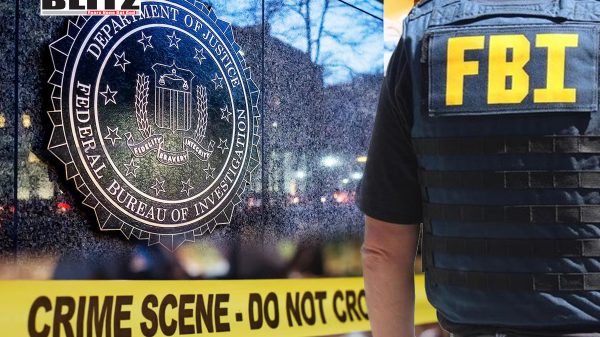FBI’s quiet crime data revisions raise public trust issues
- Update Time : Friday, October 18, 2024

In September 2023, the FBI released its official crime statistics for 2022, reporting that violent crime had decreased by 2.1 percent. This was swiftly embraced by the Democratic Party as a counter to former President Donald Trump’s repeated claims that crime in the US was surging. For weeks, headlines from major outlets, including USA Today, proclaimed a decline in violent crime for the third consecutive year, with murder and rape on the decline.
However, the narrative took an unexpected turn when the FBI quietly revised these figures, revealing that violent crime actually increased in 2022 by 4.5 percent. This discrepancy, largely unnoticed by the public due to the Bureau’s lack of transparency, raises significant concerns about the accuracy of government crime data and the political weaponization of statistics.
The revised data indicated a substantial shift. In 2022, violent crime surged, with an additional 80,029 violent crimes compared to 2021. This included 1,699 more murders, 7,780 rapes, 33,459 robberies, and 37,091 aggravated assaults. Yet, the FBI made no formal announcement about this dramatic revision. Instead, the update was buried in a cryptic reference on the FBI’s website: “The 2022 violent crime rate has been updated for inclusion in CIUS, 2023.” No mention was made of the statistical increase. It took researchers from RealClearInvestigations (RCI) to notice the change by comparing the newly released crime data to the original 2022 figures.
The lack of transparency surrounding the revision is especially concerning. While crime statistics can fluctuate due to factors like reporting methods, experts emphasize that significant changes like this require clear explanation. Carl Moody, a professor at the College of William and Mary who specializes in crime data, pointed out that while small statistical adjustments have been made in previous years, the large-scale revisions for 2021 and 2022 stand out. “The huge changes in 2021 and 2022, especially without an explanation, make it difficult to trust the FBI data,” Moody told RCI.
This trust deficit is exacerbated by the FBI’s failure to provide an explanation or issue a press release addressing the discrepancy. “It is up to the FBI to explain what they have done, and they haven’t explained these large changes,” said Dr. Thomas Marvell, president of Justec Research, a criminal justice statistical organization.
The revisions highlight a deeper problem with the way the FBI compiles its crime statistics. The Bureau doesn’t rely solely on reported crimes; instead, it extrapolates data from police departments, some of which provide only partial-year data or none at all. This estimation process is opaque and prone to changes, adding a layer of uncertainty to the final numbers. Jeffrey Anderson, who led the Department of Justice’s Bureau of Justice Statistics (BJS) from 2017 to 2021, described the FBI’s data processes as a “black box,” opaque even to internal agencies. Anderson noted that if such a significant change had occurred during his tenure, his department would have issued a clear report and press release.
This isn’t the first time a government agency has been found revising critical data without clear communication. In a similar incident, the Bureau of Labor Statistics (BLS) overestimated job creation numbers by 818,000 during a one-year period ending in March 2023. Such revisions cast doubt on the reliability of official statistics, often seized upon by politicians and the media to shape public opinion.
The FBI’s initial 2022 crime report became a political talking point, particularly for the Biden administration, as it sought to counter Republican narratives of rising crime. With violent crime becoming a key issue for voters, especially ahead of the 2024 elections, the drop in crime was frequently touted to reassure the public. For example, NPR ran headlines proclaiming, “Violent crime is dropping fast in the US – even if Americans don’t believe it.”
However, the quiet revision and the increase in violent crime by 4.5 percent calls into question these reassurances. While the FBI initially reported a 3.5 percent drop in violent crime for 2023, the updated 2022 data implies that the actual reduction is only 1.6 percent. Without these revisions, the narrative of a consistent decline in violent crime under the Biden administration would be much harder to sustain.
These revelations have reignited the debate over crime policy and public safety. Public perception of crime has remained high, despite government reports of falling rates. Polls reveal that a significant portion of Americans – across party lines – believe crime is worsening. A February 2023 Rasmussen Reports survey found that by a margin of 4.7 to 1, likely voters believed violent crime was worsening. This disconnect between official data and public sentiment suggests a deeper issue with how crime statistics are communicated and understood.
The discrepancies between FBI-reported data and other crime metrics further complicate matters. For example, the National Crime Victimization Survey (NCVS), which interviews individuals about their personal experiences with crime, found that the reported violent crime rate in 2022 actually increased by 29.1 percent – far higher than the FBI’s revised 4.5 percent increase. This discrepancy underscores a broader issue: the FBI’s crime data only reflects reported incidents, while the NCVS captures a broader picture of both reported and unreported crimes.
The gap between reported and unreported crimes is significant. According to the NCVS, only about 45 percent of violent crimes and 30 percent of property crimes are reported to police. This means that the FBI’s data, which relies on police reports, underrepresents the true scope of crime. Even serious crimes like murder and motor vehicle theft, which are more likely to be reported, have been undercounted. In 2022 alone, the FBI underreported 1,699 murders and 54,216 motor vehicle thefts.
The FBI’s mishandling of the 2022 crime data undermines public trust not only in the Bureau itself but in the broader criminal justice system. David Mustard, a crime researcher at the University of Georgia, argued that the Bureau’s lack of transparency has damaged its credibility. “This FBI report is stunning because it now doesn’t state that violent crime in 2022 was much higher than it had previously reported, nor does it explain why the new rate is so much higher, and it issued no press release about this large revision,” Mustard said.
As Americans head toward the 2024 election, crime will undoubtedly remain a key issue, and the revised FBI data will only fuel the debate. For a public that already harbors deep skepticism about government institutions, the FBI’s silence on its significant revisions raises critical questions about the reliability of official crime statistics and the transparency of the agencies tasked with reporting them.
The FBI’s quiet revision of the 2022 violent crime data has not only shifted the narrative around crime in the US but also highlighted deeper concerns about the accuracy and transparency of government data. The Bureau’s failure to acknowledge or explain such significant changes erodes public trust and fuels political division. As crime remains a central issue for American voters, particularly with the upcoming election, the reliability of the statistics used in these debates has never been more critical.














Leave a Reply